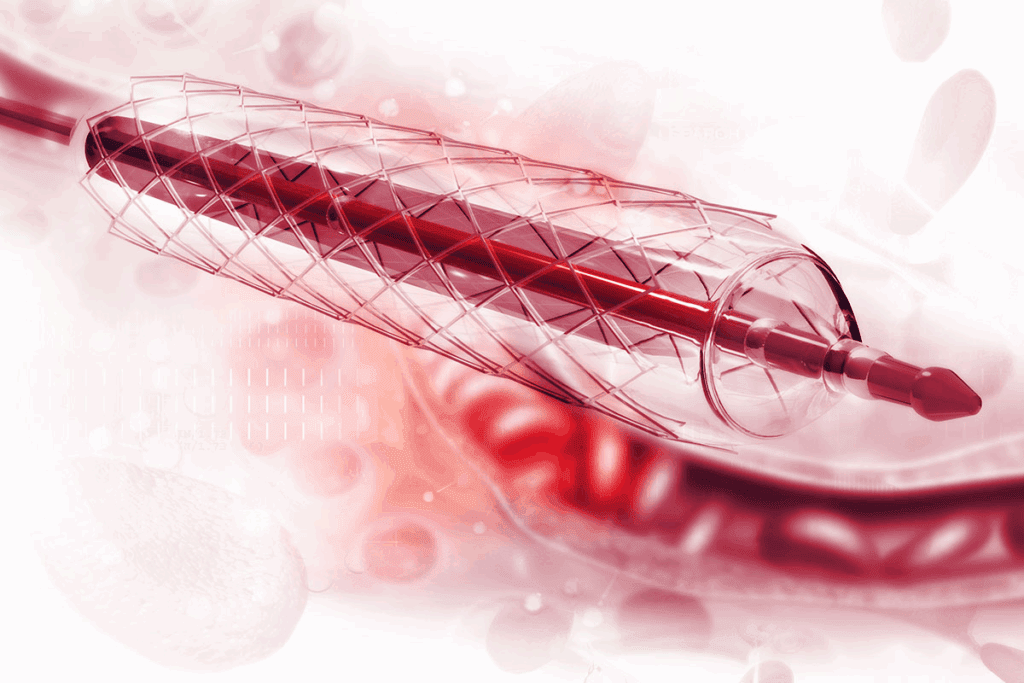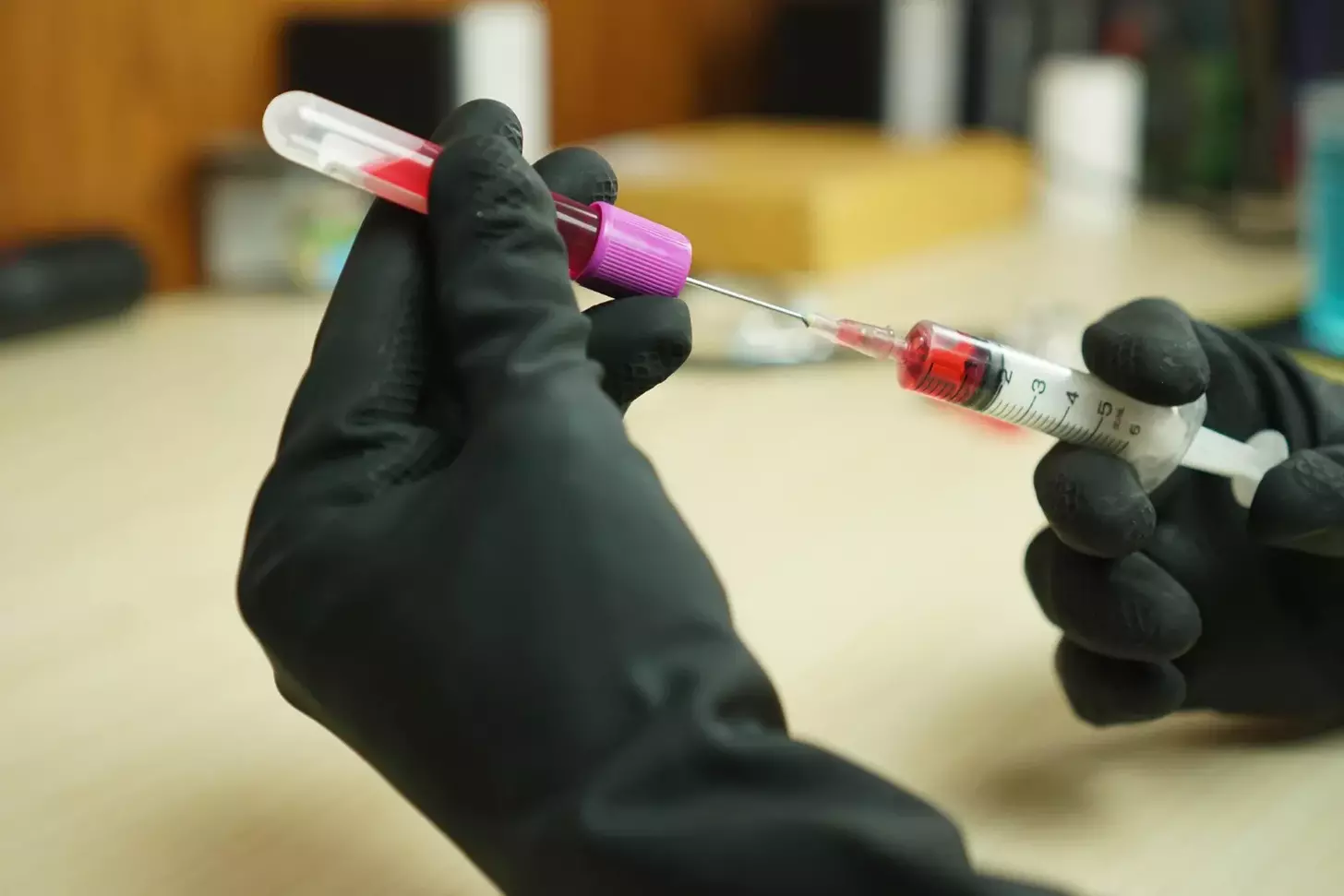Last Updated on November 26, 2025 by Bilal Hasdemir

Chronic back pain can really limit how much you can move and enjoy life. Radiofrequency ablation (RFA) is a small procedure that might help. It’s known for treating back pain caused by irritated facet joints.
At Liv Hospital, we follow top international standards for care. Our team is here to help patients from around the world get the best medical treatment. Many patients ask, “how many times can you have radiofrequency ablation?” — in most cases, the procedure can be repeated if pain returns, typically after several months or years, depending on the condition and individual response to treatment.
Radiofrequency ablation is a modern, guided procedure to stop pain signals to the brain. We’ll look into RFA’s benefits and how often it can be done.
Key Takeaways
- RFA is a minimally invasive procedure for managing chronic back pain.
- The procedure interrupts nerve signals that carry pain messages to the brain.
- Liv Hospital follows internationally trusted protocols for RFA treatment.
- RFA can provide significant relief for patients with facet joint irritation.
- The frequency of RFA repetition depends on individual patient needs.
Understanding Radiofrequency Ablation for Back Pain

Radiofrequency ablation is a new hope for those with back pain. It uses advanced tech to manage pain. Back pain can make simple tasks hard, affecting life quality. RFA is a good option for those who haven’t found relief yet.
RFA is a small procedure that stops pain signals. It targets nerves that send pain to the brain. This can greatly reduce back pain for those who suffer from it.
What is Radiofrequency Ablation?
RFA uses radio waves to heat up and stop nerves. This method blocks pain signals to the brain. A special needle delivers the energy to the nerves.
RFA is popular for back pain because it works well and is safe. It’s great for those who haven’t tried other treatments.
How RFA Works to Relieve Back Pain
RFA targets and stops pain nerves. A doctor uses X-rays to guide a needle to the nerves. Then, radio waves heat up the nerve, stopping it from sending pain signals.
This method can greatly reduce or stop pain. The relief can last a long time, but it varies for each person.
RFA is precise. It targets specific nerves with little effect on other tissues. This precision helps avoid side effects and makes the treatment more effective.
| Benefits of RFA | Description |
| Minimally Invasive | RFA is performed through a small needle, reducing tissue damage and promoting faster recovery. |
| Precision | The procedure targets specific nerves, minimizing the impact on surrounding tissues. |
| Long-Lasting Relief | Patients can experience significant pain relief for extended periods, often ranging from 6 months to 2 years or more. |
While RFA offers lasting relief, it’s not permanent. Nerves can grow back. But it’s possible to do RFA again if needed.
The Science Behind “Burning Nerves” in Your Back

“Burning nerves” in back pain relief is a precise medical technique called radiofrequency ablation (RFA). It uses radiofrequency energy through a needle to heat and disrupt pain-signaling nerves. This gives relief to those with chronic back pain.
The Mechanism of Nerve Disruption
Radiofrequency ablation heats nerves with radiofrequency waves. This heat stops the nerves from sending pain signals to the brain. This leads to less or no pain.
To start, a special needle electrode is placed near the nerve under imaging. The electrode sends out radiofrequency energy. This heats the tissue around the nerve, stopping it from working. This precision in targeting makes RFA different from other pain treatments.
Precision and Control in the RFA Procedure
RFA is precise because it targets specific nerves for pain. This is done with advanced imaging like fluoroscopy or ultrasound. This precision helps avoid harming other tissues.
| Aspect of RFA | Description | Benefit |
| Imaging Guidance | Use of fluoroscopy or ultrasound to guide electrode placement | Ensures accurate targeting of pain-causing nerves |
| Radiofrequency Energy | Heat generated by radiofrequency waves disrupts nerve function | Effective pain relief with minimal damage to surrounding tissue |
| Specialized Electrode | Precise delivery of radiofrequency energy | Maximizes efficacy while minimizing side effects |
Common Misconceptions About “Burning Nerves”
Many think RFA means “burning” nerves, which sounds harmful. But it’s actually using heat to temporarily stop nerve function. It’s a safe and effective way to reduce pain.
RFA isn’t a permanent fix. Nerves can grow back, causing pain again. But, RFA can be done again if needed. Many people find it helps them stay pain-free for a long time.
Common Causes of Back Pain Treated with RFA
Radiofrequency ablation (RFA) is a helpful treatment for chronic back pain. Many patients try different treatments without relief. RFA can change their lives.
Back pain comes from several causes. Knowing these helps decide if RFA is right for you.
Facet Joint Pain and Irritation
Facet joint pain is a common reason for back pain treated with RFA. These small joints help stabilize the spine. When they hurt, it can be very painful.
RFA targets the nerves of these joints. This can help those with facet joint pain find relief.
Other Spinal Conditions Suitable for RFA
RFA also helps with sacroiliac and arthritic joint pain. These pains come from inflammation and irritation. RFA can reduce pain by blocking pain signals.
It’s also used for chronic lower back pain and pain from spinal degeneration. Whether RFA is right depends on the condition’s severity and the patient’s health.
When RFA May Not Be Appropriate
RFA isn’t for everyone. We check each patient to see if it’s right for them. Certain health issues or nerve damage might make RFA not suitable.
RFA doesn’t cure the cause of back pain. It’s a way to manage pain and improve life. We see it as part of a bigger treatment plan.
The RFA Procedure: What to Expect
If you’re thinking about RFA for back pain, knowing what to expect can be very reassuring. The process has several key steps. We’ll guide you through them, making sure you’re ready for the treatment.
Before the Procedure
You’ll have a first meeting with your healthcare provider before RFA. This meeting is key to checking if RFA is right for you. They’ll look at your medical history, current health, and your back pain details.
Getting ready for RFA means:
- Looking over your medical history and current meds
- Doing any needed tests to find the pain source
- Talking about the good and bad sides of RFA
- Signing a form saying you understand the risks
During Radiofrequency Ablation
During RFA, you’ll lie on your stomach on an X-ray table. The procedure is done under local anesthesia to keep you comfortable. Here’s what happens:
- Your skin is cleaned and made ready.
- A local anesthetic is given to numb the area.
- A needle is placed near the nerve causing pain, guided by X-ray.
- An electrode is put through the needle.
- Radiofrequency energy heats the nerve, stopping it from sending pain signals.
Recovery and Immediate Aftercare
After RFA, you’ll be watched for a bit to see if there are any problems. Most people can go home the same day. You might feel some soreness or discomfort, but this can usually be managed with over-the-counter pain meds.
It’s best to:
- Rest for the rest of the day
- Avoid hard activities for a few days
- Use ice on the treatment area if it’s swollen
- Follow any special instructions from your healthcare provider
Knowing what to expect before, during, and after RFA helps you prepare. It can lead to significant relief from chronic back pain.
How Long Does Radiofrequency Ablation Relief Last?
Understanding how long RFA pain relief lasts is important for those with chronic back pain. Knowing this can help patients decide on their treatment.
Typical Duration of Pain Relief
RFA relief can last from six months to two years or more. This varies because everyone responds differently to the treatment.
Factors influencing the duration of relief include the severity of the condition, how precise the RFA was, and the patient’s health.
Factors Affecting How Long RFA Results Last
Several things can affect how long RFA relief lasts. These include:
- The extent of nerve damage or irritation
- The presence of underlying conditions that may affect nerve regeneration
- The patient’s lifestyle and overall health
Knowing these factors helps tailor treatment plans for better relief.
What Research Shows About RFA Longevity
Studies show RFA can give significant pain relief to many. The research suggests relief can last for extended periods.
A review of clinical data shows RFA is effective for chronic back pain. Many patients see relief for 12 to 24 months or more.
How Many Times Can You Have Radiofrequency Ablation?
If you have chronic back pain, knowing about radiofrequency ablation (RFA) limits is key. RFA can help a lot, but how often you can get it is set by rules.
Clinical Guidelines for RFA Frequency
Guidelines are important for figuring out RFA limits. They help make sure RFA is used safely and effectively for back pain. The rules say you can get RFA at the same spot no more than twice a year, under certain conditions.
Key considerations include:
- The minimum interval between procedures
- The maximum number of treatments allowed per spinal level annually
The Six-Month Minimum Interval Rule
A key rule for RFA is the six-month wait. This means you must wait at least six months between RFA treatments at the same spot. This wait is important to check if the last treatment worked and to avoid harming you.
The six-month wait allows for:
- Adequate assessment of the previous RFA treatment’s efficacy
- Minimization of possible risks from too many RFA procedures
Maximum Annual Treatments per Spinal Level
There’s also a rule about how many times you can get RFA at the same spot in a year. Usually, you shouldn’t get RFA more than twice a year at the same spot. This rule helps avoid overuse and possible problems.
| Guideline | Specification |
| Minimum Interval | 6 months |
| Maximum Annual Treatments | 2 per spinal level |
It’s important for patients and doctors to know these rules. Following them helps get the most out of RFA and keeps risks low.
Nerve Regrowth and the Need for Repeat Treatments
RFA can greatly reduce pain for many people. But the chance of nerve growth raises questions about long-term relief. It’s key to know how nerves grow back after RFA and how it affects pain relief.
Why and How Nerves Regenerate After RFA
Nerve growth is a natural process that happens when nerves are damaged, like during RFA. “The human body can grow new nerves, which might bring back pain..
Many things can affect nerve growth, like health, the severity of the condition, and how welltthe he RFA was done. Knowing these can help manage expectations and plan for more treatments if needed.
Timeframes for Typical Nerve Regeneration
Nerve growth times vary a lot among people. Usually, nerves start growing back in 6 to 12 months after RFA. But, it can take anywhere from a few months to years.
Strategies to Maximize Time Between Treatments
While nerve growth is a fact, there are ways to make pain relief last longer between RFA treatments. These include:
- Keeping a healthy lifestyle, like exercising and eating well
- Doing physical therapy to strengthen the spine and reduce pressure on the treated area
- Managing health issues like diabetes that can affect nerves
- Trying other pain relief methods, like acupuncture or stress reduction techniques
By using these strategies, patients can get more out of RFA and wait longer for more treatments. One patient said, “Using RFA with a wellness plan has really improved my life.”
In summary, knowing about nerve growth and its effects is key for those thinking about RFA for back pain. Being aware of nerve growth and how to manage it helps patients make better choices about their treatment.
Patient Experiences and Success Rates with Multiple RFAs
Many patients have found relief from chronic back pain through Radiofrequency Ablation (RFA). Some have even had multiple procedures. It’s important to look at how well RFA works, including after multiple treatments.
Documented Success Rates for Repeat Procedures
Research shows RFA can greatly reduce chronic back pain. For those needing more than one treatment, the results are encouraging. A study in the Journal of Pain Research found that repeat RFA treatments can cut pain by up to 80%.
| Study | Number of Patients | Success Rate |
| Journal of Pain Research | 100 | 75% |
| Pain Medicine | 50 | 80% |
| European Spine Journal | 200 | 70% |
Patient Satisfaction After Multiple Treatments
Patient happiness is key when judging RFA’s success. Studies show that those who have had multiple RFA treatments are very pleased. Over 85% of patients in one study were happy with their results.
What to Realistically Expect from Subsequent RFAs
RFA can offer a lot of pain relief, but it’s important to know what to expect next time. How well a second RFA works can depend on many things, like the cause of pain and the patient’s health. Usually, patients can expect pain relief for 6 to 12 months after each treatment.
Knowing the success rates and how happy patients are after multiple RFAs helps them make better choices. As we learn more about RFA, it’s clear it’s a good option for many with chronic back pain.
Insurance Coverage and RFA Frequency Limitations
Understanding insurance for RFA treatments is key for patients. It affects their choices when dealing with back pain. Knowing about insurance coverage is very important.
Typical Insurance Policies for Repeat RFA
Most insurance plans cover RFA if it’s needed. But, how often you can get it varies. Usually, insurance wants a six-month wait between RFA treatments for the same area. This rule helps nerves heal properly.
Insurance has rules for how many times RFA can be done. Some limit it based on time and area.
Documentation Required for Approval
To get insurance for RFA, you need to provide a lot of information. This includes:
- Medical records about your condition and past treatments
- Results from tests like MRI and CT scans
- A letter from your doctor saying it’s medically necessary
- Details about any RFA treatments you’ve had before
Having all the right documents is important for smooth insurance claims.
Navigating Insurance Challenges for Multiple Treatments
Getting insurance for more than one RFA can be tough. Getting pre-authorization is a big step. Working with your doctor to prepare the right documents helps a lot.
If insurance says no, you can appeal. You’ll need to give more info or documents to show why you need the treatment.
Knowing about insurance and being ready with the right documents helps patients get RFA treatments covered.
Alternatives to Consider Between RFA Treatments
Looking for ways to manage back pain? RFA is a good start, but adding other treatments can help even more. These strategies can make RFA work better and keep you feeling good longer.
Complementary Pain Management Approaches
Other therapies can help with back pain too. They focus on your overall health and work well with RFA. This mix can make pain relief even stronger.
- Acupuncture: This ancient method uses needles to help your body heal and feel less pain.
- Massage Therapy: It relaxes muscles, boosts blood flow, and eases tension, all helping with back pain.
- Mind-Body Techniques: Activities like meditation and yoga can tackle pain’s mental side, helping you feel better.
These methods can be adjusted to fit your needs. They help create a pain management plan that’s just right for you.
Physical Therapy and Exercise Programs
Physical therapy and exercise are key for back pain care. They keep you flexible, strengthen muscles, and improve your posture. These efforts are vital between RFA sessions.
A good physical therapy plan might include:
- Stretching to loosen up and reduce stiffness
- Strengthening to support your spine and posture
- Aerobic exercises to boost fitness and ease pain
Staying active also helps with weight, stress, and overall health. All these benefits help manage pain better.
When to Consider Different Interventions
It’s important to check if your current pain care is working. If not, it’s time to think about other options. Signs you might need something different include:
| Indicator | Description |
| Increasing Pain | Worsening back pain that’s not helped by current treatments |
| Reduced Mobility | Noticeable drop in mobility or daily activity ability |
| Medication Side Effects | Significant side effects from current medications |
| Impact on Quality of Life | Pain significantly affecting daily life, sleep, or mental health |
By looking at these signs and trying new treatments, you and your doctor can make a better pain plan. This plan will be tailored to your needs.
In summary, RFA is a great treatment for back pain, but adding other therapies and activities can make it even better. Exploring different approaches, physical therapy, and exercise can lead to more relief and a better life.
Conclusion: Making Informed Decisions About Repeat RFA Treatments
Understanding Radiofrequency Ablation (RFA) is key to making smart choices about your treatment. We’ve looked into the procedure and its benefits in easing back pain. We’ve also talked about what affects how long the relief lasts.
The number of RFA treatments you need varies. It depends on your pain’s cause and how your body reacts to the treatment.
For the best results from RFA, team up with your healthcare provider. They’ll help figure out the best treatment plan for you. This plan will consider your health history, pain level, and past treatment results.
Being informed about RFA treatments helps you manage your back pain better. Knowing your options and what to expect lets you move forward with confidence. Always talk to your healthcare provider about your situation and any questions you have. This way, you get the care that’s right for you.
FAQ
What is radiofrequency ablation (RFA) and how does it work to relieve back pain?
Radiofrequency ablation uses heat from radio waves to stop pain nerves from sending signals to the brain. This helps relieve chronic back pain.
How long does radiofrequency ablation last, and what factors influence its duration?
RFA can last from 6 months to 2 years. The exact time depends on the pain’s severity, how well the procedure is done, and the patient’s health.
How many times can you have radiofrequency ablation for back pain?
You can have RFA up to once every six months for each spinal area. Some rules say you can have it a certain number of times a year, based on your needs and doctor’s advice.
Why do nerves regenerate after RFA, and how long does it take?
Nerves grow back after RFA because the treatment damages the nerve endings. It can take several months to a few years for them to fully recover, depending on the person.
What are the success rates for repeat RFA procedures, and what can patients expect?
Repeat RFA procedures can be very effective, with many patients feeling a lot of pain relief. But, the relief might not last as long with each treatment. Most patients are very happy with the results.
Does insurance typically cover repeat RFA treatments, and what documentation is required?
Insurance coverage for RFA varies. But, many plans cover it if it’s needed for medical reasons. You’ll need to provide medical records, test results, and a letter explaining why you need it.
What alternative treatments can be considered between RFA procedures for managing back pain?
Between RFA treatments, you can try other pain management options. This includes physical therapy, exercise, and other procedures. These can help manage pain and might make you need RFA less often.
How is the RFA procedure performed, and what can patients expect during and after the treatment?
The RFA procedure uses imaging to find the nerves, then applies radiofrequency energy to stop them. Patients might feel some discomfort, but it’s usually manageable. Recovery is usually quick.
Can RFA be used for all types of back pain, or are there specific conditions it’s more suited for?
RFA works best for certain back pain types, like facet joint pain. It might not be right for all back pain. A doctor will need to check if it’s a good fit for you.
What are the common misconceptions about “burning nerves” in RFA, and how does the procedure actually work?
Some people think RFA burns nerves. But, it actually uses controlled heat from radio waves to stop nerves from sending pain signals. This way, it relieves pain without harming nearby tissues.
References
- Medical News Today. (2022, December 13). Radiofrequency ablation for back pain: Results and risks. https://www.medicalnewstoday.com/articles/radiofrequency-ablation-for-back-pain






